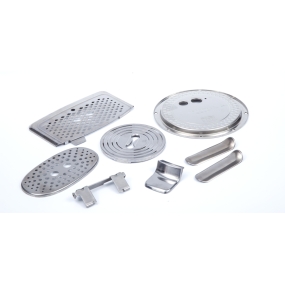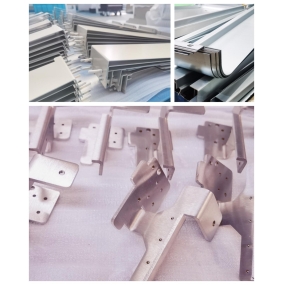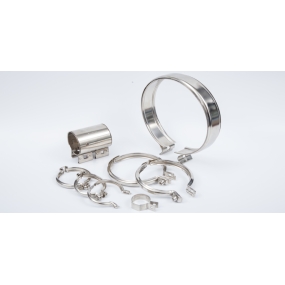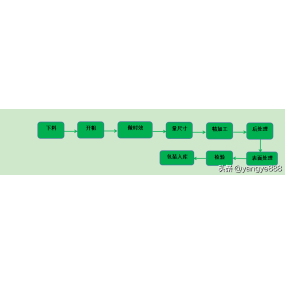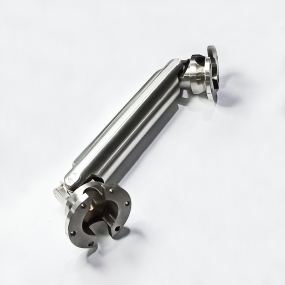Stemping technology is a processing method that applies external force to the blank through a mold to produce plastic deformation or separation, thereby obtaining a certain size, shape, and performance of the work piece. Aplicatio tecnologiae stampionis amplius est, quae lapides metallos, vectes et diversos materiae non metallicos procedere potest. Below, Yida Borun Petrochemical will briefly introduce the technical requirements for Metal Stamping process:
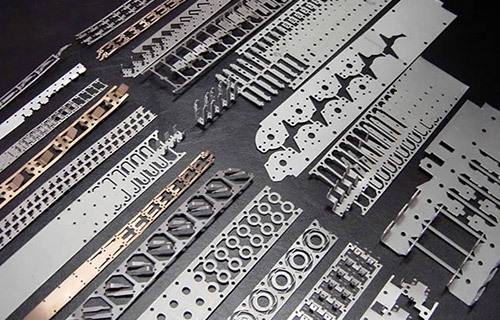
1,What are the characteristics of stamping process
(1) Metodo frigidae stampionis utilizatur ad obtinendum opus cum formis complexis quae difficile sunt facere inter alias metodes processionis, quales tenes shell partes. Precisio dimensional is partibus frigidorum a molo garantia est, ita stabilitate dimensionalis et interchangeabilitate bona sunt.
(2) High material utilization rate, light weight workpiece, good rigidity, high strength, and low energy consumption during stamping process. Therefore, the cost of the work is relatively low.
(3) Facil operari, low labor intensity, easy to achieve mechanization and automation, high productivity.
(4) The mold structure used in stamping processing is generally complex, with a long production cycle and high cost.
2,Basic requirements for stamping materials
Materiales pro stampionis utili non solum ad technical requirements of product design, sed etiam meet the requirements of stamping process and post stamping processing.
(1) Requirements for stamping forming performance: To facilitate stamping deformation and improve the quality of the parts, the material should have good plasticity, low yield strength ratio, large plate thickness directional coefficient, small plate plane directional coefficient, and a small ratio of yield strength to elastic modulus. For the separation process, it is not necessary for the material to have good plasticity. Materials with better plasticity are less likely to separate.
(2) Requirements for material thickness tolerance: The thickness tolerance of the material should comply with national standards. Quia quidam inter fabulas utilis est materiaribus cum quaeculo densitate, tolerans densitatis nimis magna est, quod non solum directo affectat qualitatem parterum, sed etiam potest detrahere mollis et pulsationibus.
3, Selection of Precision Stamping Oil
Stamping oil plays a crucial role in the stamping process, and its excellent cooling performance and extreme pressure anti-wear performance have led to a qualitative leap in the service life of molds and improvement of work piece accuracy. Emphasis super perfectionem petrae stampionis variat depending on the material of the work piece.
(1) Silicon steel plate is a material that is relatively easy to punch and cut. Generally, in order to ensure the ease of cleansing of the finished work piece, low viscosity stamping oil is used on the premise of preventing the generation of punching burns.
(2) Selecting stamping oil for carbon steel plates, the first thing to pay attention is the viscosity of the stretching oil. Determine optimum viscositatem basem super difficultatem processionis, methodom extensionis olei et conditiones humiliationis.
(3) Galvanized steel plates may undergo chemical reactions with chlorine based additives, so when selecting stamping oil, attention should be paid to the possibility of white rust caused by chlorine based stamping oil. However, using Yidabo Run sulfur based stamping oil can avoid rust problems, but it should be degreased as soon as possible after stamping processing.
(4) Stainless steel is a material that is prone to work hardening, requiring the use of tensile oil with high oil film strength and good sintering resistance. Generally, stamping oil containing sulfur chlorine composite additives is used to ensure extreme pressure processing performance while avoiding problems such as burrs and fractures on the workpiece.
4,The main content and steps of developing stamping processing technology
(1) Define the type of blank. Typus vacuum constituetur supra materiam, formam et granditudinem parterum, et numerum opus positibus.
(2) Determine the machining sequence of the parts. Sequentia partium processionis iuxta omnes necessitates technicae quales precision dimensionala, gravitate superficie, et tractura caloris, etiam tipus, structura, et granditudo vacuum.
(3) Determine the process and machining allowance. Determine the machine tools, workpiece clamping methods, machining methods, measurement methods, and machining dimensions used in each process.
5,Basic principles for developing part processing technology
(1) Principle prioritationis fine basal plane. The machining of parts must select a suitable surface as the positioning base on the machine tool or fixture. Superficie difficile, quam prima facie positionis, vocatur superficie difficile. Superficie quae processa est et ut basem positionis vocatur basem precision is. Prima superficie basee primum processi debet.
(2) Principle separation coarse and fine. For surfaces with high precision requirements, precision machining should generally be carried out after all difficult machines of the work piece. Hoc potest eliminare deformationem laboris causam clampionis fortitudinis, caloris, et inritationem interioris in machinis difficilis, et est etiam beneficium ad ordinem procedentium caloris tractionis; In mass production, rough and fine machining are often carried out on different machine tools, which is also conducive to the rational use of high-precision machine tools.
(3) Principus 'una clamping'. In single piece and small batch production, surfaces with positional accuracy requirements should be precision machined in one clamping as much as possible.

The above are the technical requirements for stamping processing technology. Reasonable selection of molds, workpiece raw materials, and stamping oil is the key to improving workpiece quality. Yida Borun is the largest high-end metal processing oil production base in China. Its independently developed stamping oil products have excellent extreme pressure and anti-wear performance, which can effectively protect molds and extend the service life of equipment. It is the designated partner of many large and medium-sized machine tool equipment manufacturers in China and has been widely recognized and praised by domestic and foreign customers.


 English
English Spanish
Spanish Arabic
Arabic Spanish Basque
Spanish Basque Portuguese
Portuguese Belarusian
Belarusian Japanese
Japanese Russian
Russian Icelandic
Icelandic Bulgarian
Bulgarian Azerbaijani
Azerbaijani Estonian
Estonian Irish
Irish Polish
Polish Persian
Persian Boolean
Boolean Danish
Danish German
German French
French Filipino
Filipino Finnish
Finnish Korean
Korean Dutch
Dutch Galician
Galician Catalan
Catalan Czech
Czech Croatian
Croatian Latvian
Latvian Romanian
Romanian Maltese
Maltese Malay
Malay Macedonian
Macedonian Norwegian
Norwegian Swedish
Swedish Serbian
Serbian Slovak
Slovak Slovenian
Slovenian Swahili
Swahili Thai
Thai Turkish
Turkish Welsh
Welsh Urdu
Urdu Ukrainian
Ukrainian Greek
Greek Hungarian
Hungarian Italian
Italian Yiddish
Yiddish Indonesian
Indonesian Vietnamese
Vietnamese 简体中文
简体中文 Haitian Creole
Haitian Creole


